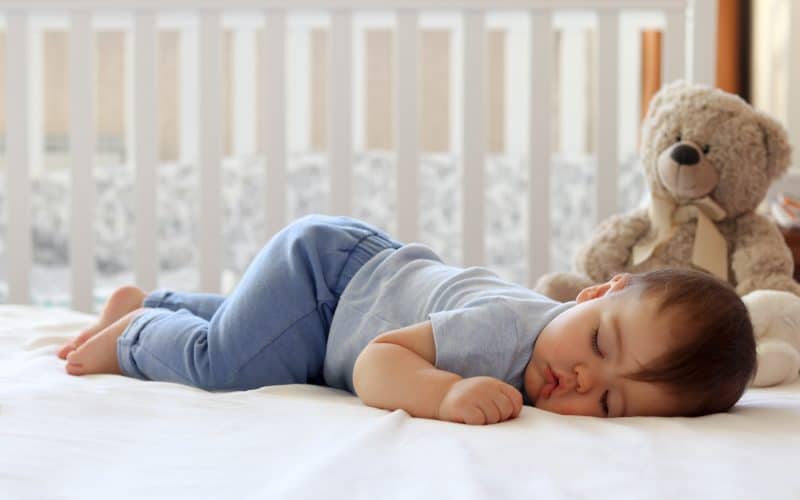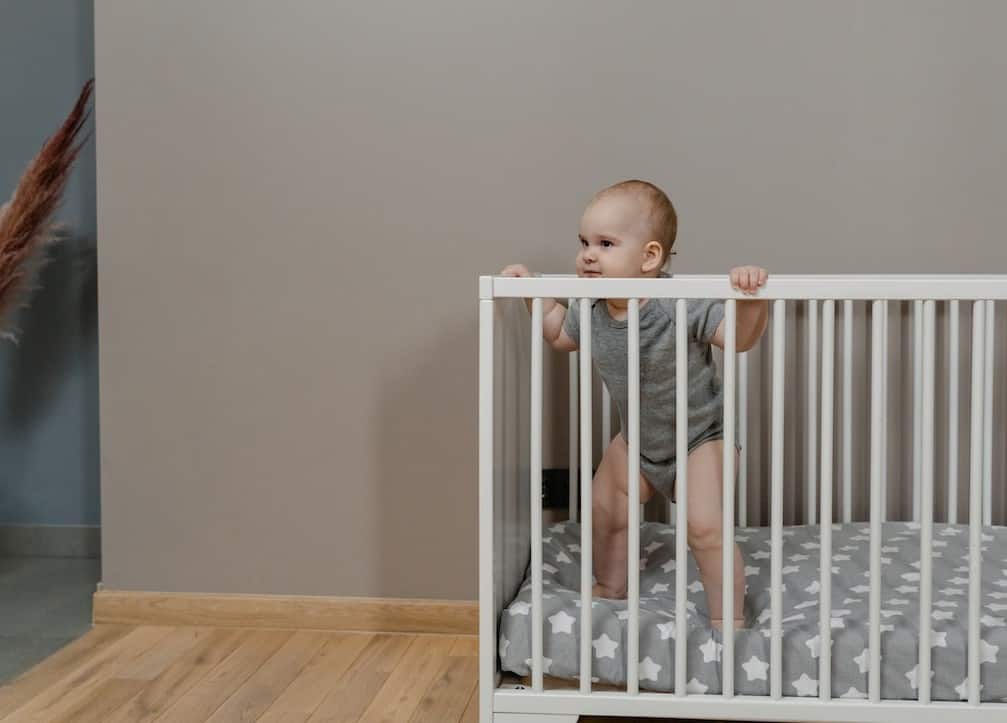As your child graduates into the toddler stage, they may begin forming their own rituals and habits surrounding their daily routine. While these habits might not make sense to us, they certainly do make sense to your toddler.
Bedtime routines, for example, are there to help your toddler calm down and get ready for bed. Some toddlers have a habit of sleeping on their knees because it is what they find comfortable. It mimics the position they were in while still in the womb, which allows them to feel safe and protected as they sleep.
While your toddler’s newfound sleeping position may seem odd, is probably not anything you need to worry about or do anything about. This article will explain a few reasons why your toddler may want to sleep on their knees.
Why Do Toddlers Sleep on Their Knees?
-
Mimics Womb Position
In the womb, babies usually curl up with their arms and legs tucked into their torso. It is a position that they come to associate with being in the womb and by extension, with safety and comfort. They may also assume this position due to muscle memory from the 9 months they spent in there.
Now that your toddler has the muscle strength to roll over and prop themself up on their arms and legs, it is normal to see them assuming this position while sleeping, even if you put them down on their back.
-
Conserves Body Heat
Sleeping curled up with your knees tucked under your upper body helps conserve body heat. If your toddler tends to sleep this way in the winter months or on nights when the temperature is lower than usual, it may be because they feel cold and are trying to conserve body heat.
Because blankets are not safe for young children, a sleep sack or wearable blanket can be a better option for providing your toddler with extra warmth when they go to bed.
-
Feels Like Being Held
Your toddler may sleep on their knees with their chest towards the crib mattress because it mimics the sensation of being held chest-to-chest with you. This, combined with the warmth generated by being curled up gives them a sense of comfort and security that helps them fall asleep.
Having their body weight against their chest pressure creates a sensation of pressure which may also be a self-soothing mechanism, similar to how a weighted blanket feels.
-
Preparation For Crawling
Your toddler may be spending more time on their knees as they prepare for crawling. Sleeping on their knees allows them to get used to the feeling of bearing more weight in that area of their body.
As your baby gets more confident in their crawling skills and gets comfortable with their crawling posture, they may adapt the position to sleep in as well. They have gotten used to the position of being on their knees for extended periods and now find it comfortable enough to sleep or take a nap in.
-
For Comfort
While your toddler’s sleeping position may look uncomfortable to you, it is important to remember that their body is much more flexible than yours is. Sleeping folded up on their knees isn’t as odd for toddlers as it may be for adults.
If they are voluntarily putting themself into that position at a time when they are supposed to be calm and relaxed, then chances are, they are not finding it as uncomfortable as you imagine.
-
Developing Motor Skills
As your toddler develops better gross motor coordination, they can perform a greater variety of movements every day. This includes picking different sleeping positions that they prefer, much like adults and older children do.
Your toddler may have wanted to take the knees to chest sleeping position for a test run. You may see the sleeping position stick around for a while, should they find it comfortable. On the other hand, they may that it isn’t their thing. In which case you may find them in a different position next time you put them down for a nap or at night.
Should I Roll My Toddler On Their back Again?
Once your toddler has developed the core strength and coordination needed to roll from their back onto their stomach and vice versa, there is no need to worry about them staying on their backs for safe sleep. They now have mastery of an important motor skill that helps them protect their airway.
You may still wish to roll your toddler on their back again when you find them sleeping on their knees. While not necessary, it is just fine to do so if you feel safer and more confident having your baby sleep on their back.
However, they may still return to their preferred sleeping position after you flip them on their back. Don’t worry too much about it and try not to lose sleep over your baby’s sleeping position. It is normal for toddlers to pick odd or funny-looking sleeping positions.
Safe Sleep Tips For Toddlers
Sudden Infant Death Syndrome (SIDS) risk goes down significantly after your child’s first birthday. This eliminates the need for some of the safe sleep rules for babies. That being said, there are still some steps you can take to keep your toddler safe as they sleep.
-
Keep A Safe Sleeping Space
Toddlers are capable of significantly more movement than babies. They are also much more adventurous, which means you could end up with an escape artist on your hands.
If your toddler is still in a crib, keep the mattress in the lowest setting possible. Avoid placing crib bumpers, blankets, stuffed animals, and anything else that could be used as a climbing step in the crib.
-
Transition To A Toddler Bed
If your toddler still finds ways to climb out of their crib even with these precautions in place, you may need to consider transitioning them to a toddler bed that is close to the ground and has a guard rail to prevent them from rolling off the bed.
The switch to a toddler bed usually happens between 18 months and 3 years of age. A good indicator of it being time to make the transition is when your toddler is 35 inches tall (the height limit for most cribs) or their crib rail is less than ¾ of their height.
-
Limit Screen Time
Digital screens are highly stimulating and can make it difficult for your toddler to fall asleep at night. Avoid giving your toddler screens at least an hour before they start their bedtime routine, to help them get better sleep.
The American Academy of Child and Adolescent Psychiatry recommends that screen time should be avoided for children less than 2 (except when video calling friends and family) and be limited to an hour a day of high-quality educational programming for children 2-5 years old.







